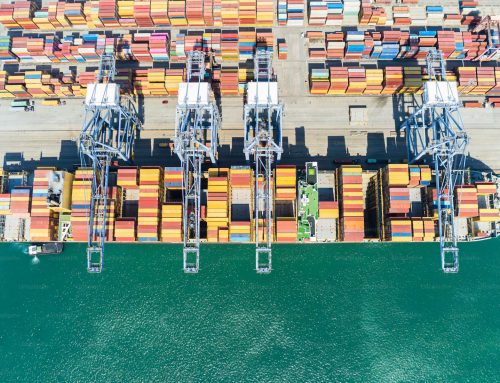There are many challenges facing humanitarian organisations after an emergency is declared. How to bridge the relief resource and capability gap is the first challenge. To stage a response and overcome this gap, humanitarian organisations depend on their supply network composed of a number of loose partnerships with a range of actors. After an initial assessment the next step typically consists of the installation of reception areas for displaced people in a safe zone, screening and registering of survivors, provision of first aid and medical support, shelter, food rations, potable water and sanitary installations. Time is the most critical factor under these circumstances and, in order to establish a supply chain for humanitarian aid as quickly as possible, good communications are a must.
Examining previously declared emergencies, Sierra Leone, Nepal, the Philippine’s, Haiti, Pakistan and the Asian Tsunami the government mobilised their armed forces to assist in the humanitarian relief effort. The military have assets such as transport aeroplanes, helicopters, communications equipment, trucks and heavy construction equipment (such as bulldozers and cranes), as well as the personnel trained to operate and repair them. The military also have medical expertise and personnel that they can deploy to assist in the relief effort as in West Africa in 2014.
As part of the disaster relief effort the international community normally dispatches their military to assist in the aid effort. To the layperson, the term civil-military coordination evokes notions of a seamless division of labour between aid workers and international military forces. Media coverage from crises such as Sierra Leone, Nepal, the Philippines, Haiti, New Orleans, Pakistan, and the Asian Tsunami has reinforced this expectation, showing relief agencies distributing food and medicines under the guard of heavily armed soldiers, or aid workers and military working together to construct refugee camps, set up field hospitals, provide emergency water and sanitation. Donor countries, providing relief and development aid and troops to such missions expect efficient teamwork as pure common sense. This has raised important discussions around the implications of military collaboration within the humanitarian space.
Civil military coordination essentially deals with two aspects of military support to civilians, firstly the provision of security, e.g. a military escort for a humanitarian convoy, and secondly, the provision of military assets, e.g. equipment such as trucks or helicopters, and skills, knowledge and manpower such as medical and engineering expertise. We saw both these elements emerge in Sierra Leone, Nepal, the Philippines, Haiti, Pakistan and during the Asian Tsunami relief effort.
Military support for natural disasters are widely used due to the capacity and asset availability required to support the surge demands. In the harsh reality of a disaster, the lines between the military and humanitarians have sometimes been blurred. In natural disasters, the greatest impact of military involvement is in the crucial life sustaining days immediately after the event. Recent experiences in natural disasters such as Sierra Leone, Nepal, Haiti, Pakistan and the Asian Tsunami have proven that closer coordination among NGOs and the military can more effectively serve the goal of delivering assistance in humanitarian emergencies.
Success in cross-sectoral collaboration, particularly in the realm of civil-military relations, often depends on the personalities of the field level personnel and the liaison structures that are established. Reliance on individuals is a risky business however, particularly among relief and development NGOs, given high rates of turnover, particularly among field staff. Uncooperative attitudes are not uncommon within and across relief organisations and the military. This may result from competition for resources, for power, and for profile, but it may also arise from personal likes and dislikes, or stereotyping.
Due to the enormity of the disaster in an emergency and the number of organisations that are present, the lessons from emergencies has highlighted the need for leverage of available resources and cooperation and coordination amongst the military, private sector and humanitarian organisations to provide the most effective relief.
– Graham




